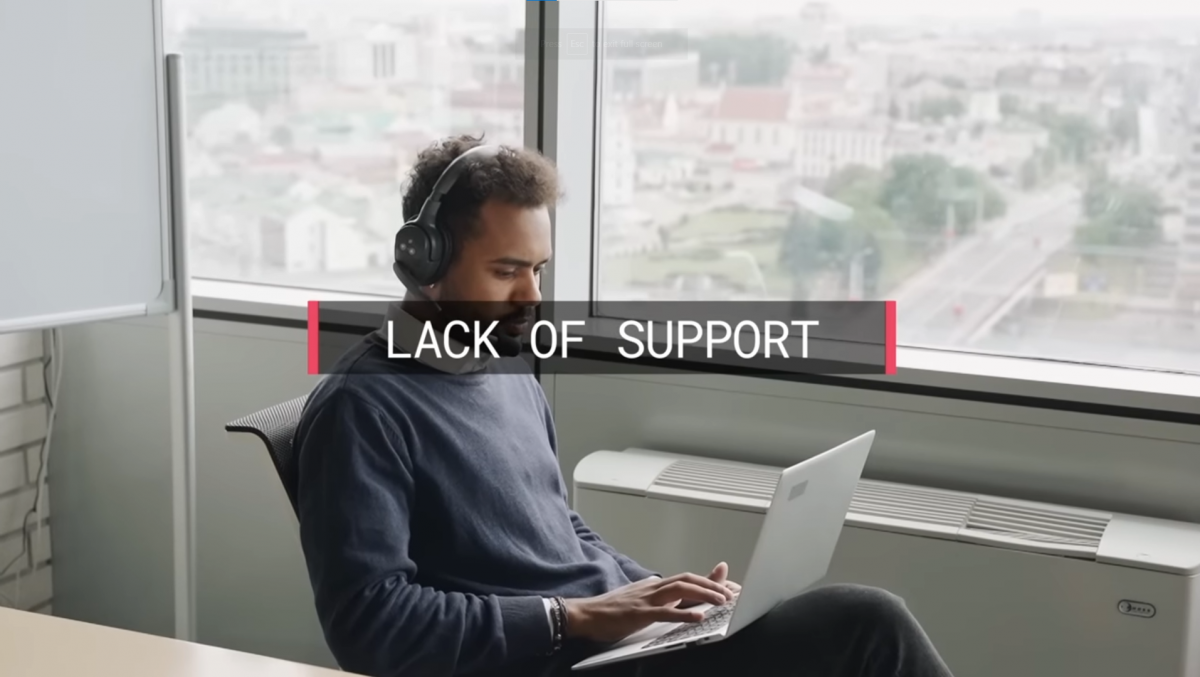Hey, Sam from ThreeDee here! ?
I noticed many negative comments in our video about why Blender is not the industry standard.
Of course, everyone has their own opinions; you should use whatever software you feel more comfortable with. As long as we keep this conversation civil, this is good for developing all these tools and, more importantly, us as artists.
If Blender does something better than Maya, and you’re a Maya user, you should pressure Autodesk to make better tools; the same goes for all software.
"Competition only brings better tools for us to be creative with."
However, some comments were actually wrong about some facts, and some things were not super precise.
So, in this video, we’ll talk about some of the hate and misconceptions surrounding Blender and free software.
Clunky UI

First off, one of the main things a lot of people commented on was the clunky UI, slash, how the software felt clunky in general; I honestly think it's about getting used to the software, Blender is a very shortcut-driven software, and because of that, it requires a bit of muscle memory, some shortcuts are god-awful, but you can change then, and even make then follow other software shortcuts like Maya’s, there is even a template called “industry standard.”
Visually speaking, it's not very different from most 3D software; I feel it's more about getting acquainted with it.
And it is much better than before 2.8; there is a fork of Blender called B for artists; it's essentially just a different face for the Blender; you can try it if you think the original UI is too intimidating.
Big projects

The handling of big projects and scenes on Blender was a problem a couple of years ago, but since the available movies got more complex, Blender’s ability to work with bigger stuff improved; yes, other software like 3Ds Max are more reliable when it comes to poly-count, but it is not a huge issue anymore like it was years ago.
The significant slowdowns will show up with highly dense meshes like skin-pores when sculpting; there are tools to help circumvent that, the simplified option on the render properties to limit the viewport subdivision, for example, and the multi-res modifier for sculpting, better hardware also plays a role in this.
Zbrush is the king of extremely dense meshes for sculpting, but not every sculpture is highly viscous, and Blender is not as slow as in previous versions.
Viewport performance
While on slow things, I saw a couple of comments about lousy viewport performance; I only noticed this when using material preview or render view in huge scenes using Eevee.
For all intents and purposes, Eevee is essentially just a videogame; if your machine is incapable of running games, you’ll likely have a bad performance while using it.
You’re better off setting the shading view to textured or material and changing the viewport color, like many animators do on Maya, to not look at grey all day.
Procedural textures can also be very slow depending on their complexity; since it's procedural, the closer you are to the camera, the higher definition it becomes, and the slower it's bound to be.
What about Houdini

Houdini, not that one, SideFX Houdini, lots of people talked about how Houdini is the conquerer of all 3D-related stuff; the thing is, while Blender is, like I said in that video, a swiss army knife, Houdini is like a chisel, it was designed to do 1 thing. It does it very well, procedural stuff, modeling, FX, and simulations, all procedural and node based; you can model hard surfaces on Houdini, but why would you? It was not designed for it and lacks quite a bit.
Blender can do some of what Houdini was made for, especially now with geometry nodes, but comparing the two is like comparing a swiss army knife to a chisel; if you want to carve wood, you can cut with both, but the chisel was designed from the ground up for it, Houdini is just not a generalist tool like, Blender, Maya and 3Ds Max are, so this comparison is a bit far fetched.
For example, all these software can do fluid simulations, but Houdini will likely be better than all of them, faster, more stable, and probably easier.
Always keep in mind that the one making the art is the artist, not the software; the software is merely a tool; you can achieve great things with a swiss army knife if you know how to use it; you can butcher a piece of wood with a chisel if you don’t know how to use it properly.
Lack of support

You won’t have a hotline you can call, but you’ll have a whole community of artists and devs you can reach out to, and most of them are more than happy to help.
Because Blender is open source, if you’re in a company and need a fix for something, an in-house dev should be able to help; many studios already do that to an extent with plugins and in-house solutions for proprietary software.
Blender only cares for shiny new tools

This is a sentiment I can understand; with each new version of Blender, we have new features, when sometimes the older ones, like the USD support, is not yet 100%; this happens because of the development philosophy of open source in general.
As far as I know, there are developers assigned to a specific thing over at Blender institute, especially those paid by companies like Nvidia, but, generally speaking, devs in open-source software usually work on whatever they want to at the moment, this has the plus side of always having a very engaged developer, and the downside of some features and bugs simply being neglected, because no one wants to work on them.
While I don’t believe Blender only cares for shiny new tools, they can sometimes get distracted by other stuff instead of fixing older problems. Still, they eventually fix those, and if you’re a capable developer, you can contribute to the software. The fixes will be merged into the leading software, which is something you can't do with proprietary software.
It’s only good because it’s free

Why would you sculpt in Blender? I would say this if Zbrush was free for personal and professional projects.
No, Blender is not only good because it’s free but also has its own strengths and weaknesses; for example, its shortcut-driven mode is unique to it, as well as some workflows that rely heavily on modifiers.
If all those software were free, Blender would likely not exist; it only came to life because they wanted to make something good for free.
We do live in the real world, though, where Zbrush, and other professional-grade software, cost a pretty penny; if your main goal is to sculpt, and you want nothing more, and can afford Zbrush, have at it, use the best tool for the job.
If you want to sculpt, model, texture, render, experiment, and see if 3D is for you, go with Blender, you’ll lose nothing, only gain experience.
Check now the Free Beginner 3D blender Tutorial
Old studios don’t use Blender
Older companies tend to already have a set of tools and scripts, and they don’t want to change; this is true for the whole pipeline, and those bigger studios don’t really care about the cost of software, as they can afford multiple licenses of different software for all of their artists.
Newer companies and smaller teams would benefit greatly from software like Blender; it’s cheaper and generally speaks to a younger audience who grew up with Youtube tutorials and a self-taught mindset.
Commercial licenses for plugins

While vanilla Blender is fantastic, many add-ons help it make it even better, both free and paid; some comments argue that some of these add-ons are paid and that you sometimes need more than one license for multiple computers, neglects the benefits of Blender being free.
This is simply not true because these add-ons are affordable, especially if we’re talking about a studio. Most of them are single purchases only, not a subscription. You can get a lot done with vanilla and free add-ons.
It might not be accessible if you need a particular addon, but it's much cheaper than paying a subscription for software and sometimes also paying for a plugin for it.
Getting a job with Blender

Since we are talking businesses, I saw many comments going along the lines that I never saw Blender listed in a job application.
This is very much not my experience; on the screen, you can see many job offers; I found on ArtStation, they either require or allow the usage of Blender; many studios, especially game studios, are gravitating towards Blender, partially because of how fast you can prototype stuff, and game-dev requires that speed, it’s mainly used for modeling in that area.
Conclusion
Blender, as stated before, is a swiss army knife; it can do a lot, and it can do it well, but it's not perfect at anything it does; it is a jack of all trades, master of none, it’s a generalist tool by design.
As the artist, you should use the best tool for the job, or a capable tool, Blender might not be the best at procedural modeling like Houdini, but it is capable, and if you only have access to it or you enjoy using it, it will get the job done.
This goes for all software, and the more software you know and can use, the better of a professional you are; we should all strive for better tools, regardless of what company makes them, and not look down on a piece of software just because it’s free, or just because you don’t understand it, or can’t use it to its full potential.
The artist makes the strokes, and the brush is merely a tool.
I hope this blog helped clear some of the negativity and clear some questions; if you want to have conversations like this and many others, go to our Discord.
P.S. If you like video format more, definitely check our video here:
See you in the next blog post ?
Sam from ThreeDee



